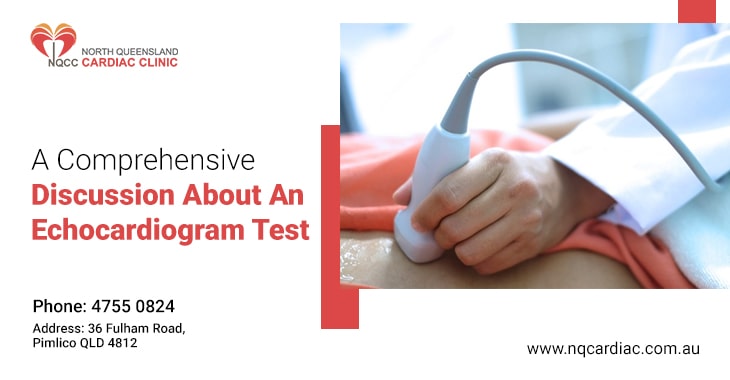Diagnostic tools have completely changed how healthcare providers see and address various medical issues in modern medicine. The echocardiogram, also called an “echo” exam, is an extraordinary technology. This non-invasive technique has proven to be a valuable tool for evaluating the heart’s structure, operation, and general health. If you are looking for a reliable Echocardiogram Clinic Near Me to conduct the Best Echocardiogram Test, contact North Queensland Cardiac Clinic in Pimlico, Australia.
This blog discusses some important aspects of an Echocardiogram Test.
Let’s dive into the detailed discussion:-
- Understanding Echocardiograms
- Types of Echocardiograms
- The Echocardiogram Procedure
- Significance and Applications
Understanding Echocardiograms:
An echocardiogram is a specialist imaging technique that generates comprehensive images of the heart using high-frequency sound waves (ultrasound). Echocardiograms are scans that provide essential information on the heart’s chambers, valves, blood flow, and overall cardiac performance. This non-invasive approach allows healthcare practitioners to check the condition of the heart without requiring surgery or other invasive methods.
Types of Echocardiograms:
Let’s have a look at the types of echocardiograms. If you want an Echocardiogram Test In Pimlico, visit NQCC today.
Transthoracic Echocardiogram (TTE):
A TTE is performed by placing a transducer (a device emitting ultrasound waves) on the chest wall, which emits sound waves that bounce off the heart structures, creating real-time images.
Transesophageal Echocardiogram (TEE):
In a TEE, a specialized transducer is passed through the esophagus to obtain clearer and more detailed images of your heart. This method is particularly useful for visualizing structures that are difficult to see with a traditional TTE, like the back of the heart.
Stress Echocardiogram:
This type involves performing an echocardiogram before and after exercise or medication that stimulates the heart. It helps evaluate how the heart functions under stress and can be instrumental in diagnosing coronary artery disease and assessing exercise capacity.
Doppler Echocardiogram:
Doppler ultrasound is incorporated into an echocardiogram to assess blood flow through the heart and blood vessels. It can reveal abnormalities like regurgitation of blood through valves and stenosis of blood vessels.
The Echocardiogram Procedure:
The Best Echocardiogram Test procedure is straightforward and usually takes 30 to 60 minutes to complete.
Here’s what you can expect:-
Preparation:
For typical echocardiography, no specific preparation is usually necessary. If you’re having a stress echocardiography, your doctor may urge you to avoid coffee and certain drugs before the test.
During the Test:
You will lie on an examination table, and a technician will apply a gel on your chest to aid in transducer contact. The technician will move the transducer across your chest, capturing photos of your heart from various angles. You may be requested to alter postures or temporarily hold your breath to increase image quality.
Post-Procedure:
The technician will wipe off the gel from your skin once the echocardiogram is complete. You can start your normal activities right away, and a cardiologist will analyze the images to accurately assess your heart’s condition.
Significance and Applications:
Echocardiograms play a pivotal role in diagnosing and monitoring a wide range of heart conditions, including:-
- Echocardiograms can identify abnormalities in the heart valves, like stenosis and regurgitation, assisting medical professionals in assessing the severity of the problem.
- The test can detect diseases like cardiomyopathy that alter the structure and performance of the heart muscle.
- Echocardiograms are extremely helpful in identifying structural heart anomalies that are present at birth.
- These tests can identify the existence of blood clots, aneurysms, and other conditions affecting the aorta.
Conclusion
By giving a non-invasive window into the intricate workings of the heart, the Best Echocardiogram Test has altered the landscape of cardiology. These tests allow for early identification, precise diagnosis, and well-informed treatment options, ultimately improving patient outcomes. Contact our expert cardiologists, Dr Dharmesh Anand and Dr Raibhan Yadav, at North Queensland Cardiac Clinic for the best Echocardiogram Test In Pimlico, Australia.


